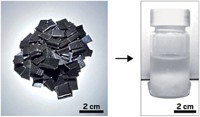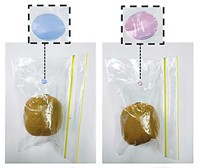Advertisement
Grab your lab coat. Let's get started
Welcome!
Welcome!
Create an account below to get 6 C&EN articles per month, receive newsletters and more - all free.
It seems this is your first time logging in online. Please enter the following information to continue.
As an ACS member you automatically get access to this site. All we need is few more details to create your reading experience.
Not you? Sign in with a different account.
Not you? Sign in with a different account.
ERROR 1
ERROR 1
ERROR 2
ERROR 2
ERROR 2
ERROR 2
ERROR 2
Password and Confirm password must match.
If you have an ACS member number, please enter it here so we can link this account to your membership. (optional)
ERROR 2
ACS values your privacy. By submitting your information, you are gaining access to C&EN and subscribing to our weekly newsletter. We use the information you provide to make your reading experience better, and we will never sell your data to third party members.
Materials
Dyeing For Green Textiles
Incorporating chromophores into a polymerization catalyst leads to colorful polymers with low environmental impact
by Bethany Halford
November 8, 2010
| A version of this story appeared in
Volume 88, Issue 45
By incorporating a chromophore into an aluminum polymerization catalyst, chemists can now prepare colored polymers in just one step (Angew. Chem. Int. Ed., DOI: 10.1002/anie.201004920). The so-called DyeCat process places the dye directly into the backbone of poly(lactic acid), or PLA, thereby circumventing current coloration techniques in which polymers must be scoured, dyed, and then treated for colorfastness. “Hence the consumption of energy, water, chemicals, and time, as well as effluent production, are all avoided,” writes the research team from the University of Leeds, in England, led by Patrick C. McGowan. The dye molecule can be incorporated in three different ways: It can be appended to the ligand framework that stabilizes the aluminum center, designed to act as the aluminum-stabilizing ligand, or used to initiate polymerization. With the latter method, the researchers prepared yellow, red, and purple PLA. Mixing the yellow and purple polymers, McGowan’s group made black PLA filaments—a color that is popular in textiles but tough to prepare because it requires high dye loading and tends to leach. The black filaments were woven into a dress that is currently on display at the Science Museum in London.





Join the conversation
Contact the reporter
Submit a Letter to the Editor for publication
Engage with us on Twitter